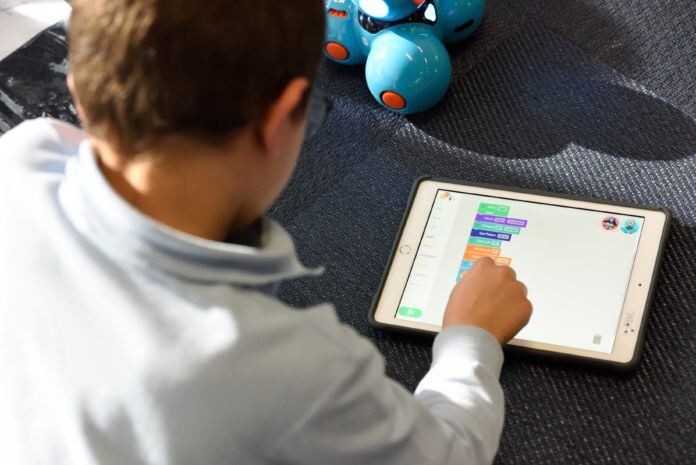A sophomore high school student asked the reading specialist to look at the answers the student had written to questions in her world history textbook as she studied for a chapter test. In response to the question, “What was Robespierre's role in the Reign of Terror?” the student had copied the sentence from the textbook: “Robespierre was the architect of the Reign of Terror.” When the reading specialist asked what this meant, the student responded, “Oh yeah, he must have built something.” She could read the words, but she was unable to get at the passage's meaning.
What We Know
This student's struggle illustrates a typical challenge that many adolescents face in comprehending content textbooks. Middle and high school students who encounter difficulties in reading generally fall into one of three groups (Schoenbach, Greenleaf, Cziko, & Hurwitz, 1999). Some have severe deficits in reading that can be traced back to weak decoding skills. A second group may know enough phonics to laboriously sound out words, but they become so focused on decoding that they lose all sense of the meaning of the words and sentences.
But most struggling adolescent readers have no trouble decoding words. These students' difficulties are caused by the fact that they have limited vocabularies or lack broad background knowledge to apply to their reading, and thus they cannot create meaning. Such students, although often not recognized as struggling readers by content teachers, are found in most middle and high school classrooms across the country.
Recent data indicate that adolescents in the United States are not keeping pace with current literacy demands. These data also underscore disparities among racial and ethnic groups and among students from different socioeconomic levels. Reading scores of 12th grade students on the National Assessment of Educational Progress (NAEP) have remained flat for 20 years. Since 1988, the gap between the scores of white and black students has widened in 8th and 12th grade (U.S. Department of Education, 2000). At the same time, schools continue to rely on textbooks as the main printed source of curriculum delivery—even in the face of evidence showing that the average student in secondary classrooms is reading below the level of many content-area texts (Allington, 2002).
When teachers become aware that students cannot read their textbooks, they sometimes respond by providing students with all key ideas and concepts through in-class lectures. This practice may actually circumvent students' need to improve their literacy skills, thus avoiding the problem rather than addressing it (Schoenbach et al., 1999).
The nature of secondary school teacher training programs and of the secondary schools themselves may exacerbate the problem (Alvermann & Moore, 1991; Vacca & Vacca, 2005). At most, secondary teachers are required to take one course in content reading strategies. In addition, secondary schools are departmentalized, and each department focuses on its core content rather than on more general skills. We often hear a high school math or social studies teacher say, “I don't have time to teach reading or writing. That's the job of the English teachers.”
This is a common misconception. English teachers have specific content to teach and do not have any more time than other content-area teachers do to teach students how to read to learn (Irvin, Buehl, & Klemp, 2003).
What You Can Do
A recent study published by the Comprehensive School Reform Quality Center (2005), Works in Progress: A Report on Middle and High School Improvement Programs, surveyed widely adopted programs and approaches, including those that address the diverse needs of adolescent readers. The models surveyed include Accelerated Reader, Student Team Reading and Writing, SRA Corrective Reading, the Reading Apprenticeship framework, and many others. Because the current base of research on secondary school improvement models is sparse, the report does not endorse the adoption of any specific program but instead presents these programs as “promising” and demonstrates that schools have many external programs from which to choose.
Develop a schoolwide literacy focus, including targeted professional development and strong instructional leadership.
Adopt a set of research-based instructional strategies, including such techniques as reciprocal teaching, graphic organizers, prompted outlines, and questioning the author, to foster reading growth across all content areas.
Offer focused intervention classes taught by a trained reading specialist for students with severe reading deficits.
Increase opportunities for students to choose books for pleasure reading during the school day.
Use complementary trade books that present content textbooks' key facts and concepts in a more engaging style.
Conduct assessments, both formal and informal, to help teachers understand the literacy needs of their students.
Emphasize prereading activities, during-reading strategies, and graphic organizers to guide students in building background knowledge and creating meaning during the reading process.
When designing this kind of schoolwide approach, educators should take advantage of the many useful resources that have been published in response to the growing concern about adolescent literacy. Two good examples are Adolescent Literacy Resources: Linking Research and Practice (Meltzer, Smith, & Clark, 2001) and Building Reading Proficiency at the Secondary Level: A Guide to Resources (Peterson, Caverly, Nicholson, O'Neal, & Cusenbary, 2000).
Educators Take Note
To meet the daunting challenge of improving adolescents' literacy skills, teachers, administrators, and policymakers must move beyond a collection of effective programs. We must embrace a new attitude regarding adolescent literacy, recognizing that reading is not a static skill, but one that needs to grow along with the individual. The problem of older students who struggle with reading comprehension is urgent, and we must address it with systematic approaches that help schools focus on literacy growth for all students across all subject areas.



